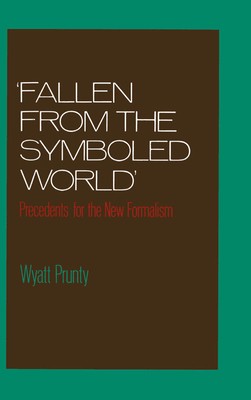
- We will send in 10–14 business days.
- Author: Wyatt Prunty
- Publisher: Oxford University Press, USA
- ISBN-10: 0195057864
- ISBN-13: 9780195057867
- Format: 14.8 x 21.8 x 2.9 cm, kieti viršeliai
- Language: English
- SAVE -10% with code: EXTRA
Reviews
Description
This study evaluates figure and form in contemporary poetry, especially the powers of simile and simile-like structures. Examining the works of Nemerov, Wilbur, Bowers, Hecht, Justice, Cunningham, Bishop, Van Duyn, Hollander, Pack, Kennedy, Ammons, Creeley, and Wright, Prunty argues that doubts about language, the tradition, and theistic assumptions embedded in the tradition have made simile and various simile-like arrangements into major modes of thought. From Lowell's early interest in the "similitudo" and the "phantasm" of Gilson, to Husserl's "phantasies" and Heidegger's interest in similitude, to the use made by contemporary poets of simile, he shows that metaphor--together with slippage, mimicry, synaphea, conjunctions, anacoluthon, chiasmus, and other simile-like patternings--have proven to be more trustworthy than symbol and allegory. Throughout the study, Prunty demonstrates that as uncertainty about language has changed from a predicament of mind to a new way of
thinking, simile and simile-like occurrences have provided poetry with variational thought and constitutive power.
EXTRA 10 % discount with code: EXTRA
The promotion ends in 23d.03:58:03
The discount code is valid when purchasing from 10 €. Discounts do not stack.
- Author: Wyatt Prunty
- Publisher: Oxford University Press, USA
- ISBN-10: 0195057864
- ISBN-13: 9780195057867
- Format: 14.8 x 21.8 x 2.9 cm, kieti viršeliai
- Language: English English
This study evaluates figure and form in contemporary poetry, especially the powers of simile and simile-like structures. Examining the works of Nemerov, Wilbur, Bowers, Hecht, Justice, Cunningham, Bishop, Van Duyn, Hollander, Pack, Kennedy, Ammons, Creeley, and Wright, Prunty argues that doubts about language, the tradition, and theistic assumptions embedded in the tradition have made simile and various simile-like arrangements into major modes of thought. From Lowell's early interest in the "similitudo" and the "phantasm" of Gilson, to Husserl's "phantasies" and Heidegger's interest in similitude, to the use made by contemporary poets of simile, he shows that metaphor--together with slippage, mimicry, synaphea, conjunctions, anacoluthon, chiasmus, and other simile-like patternings--have proven to be more trustworthy than symbol and allegory. Throughout the study, Prunty demonstrates that as uncertainty about language has changed from a predicament of mind to a new way of
thinking, simile and simile-like occurrences have provided poetry with variational thought and constitutive power.


Reviews